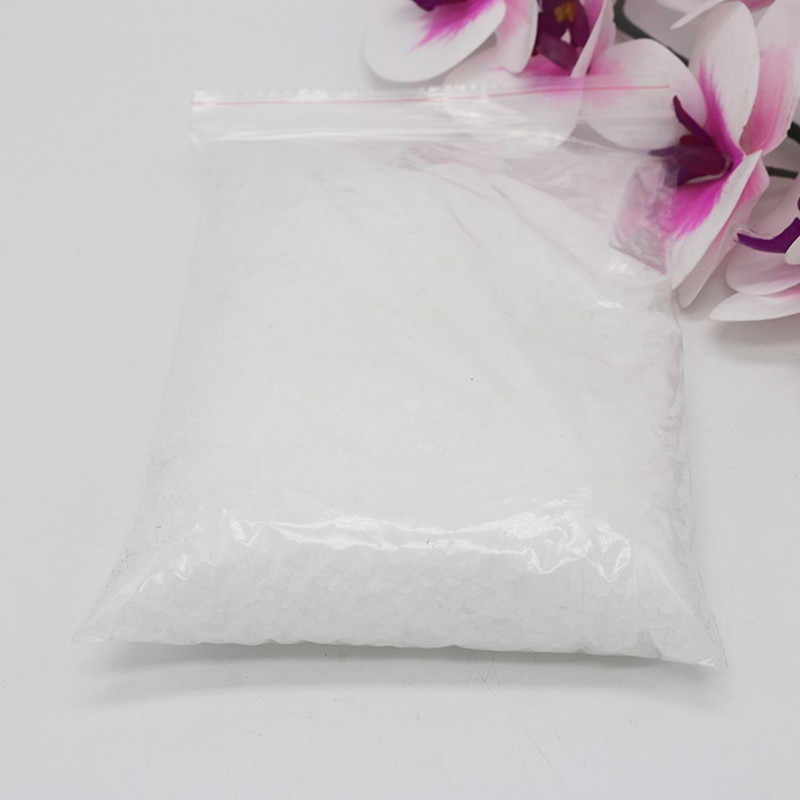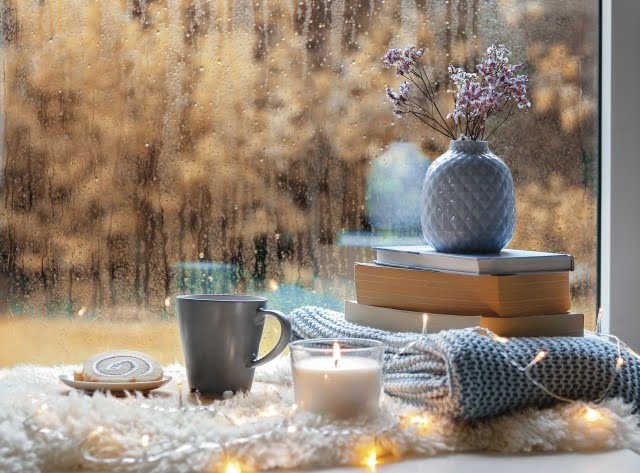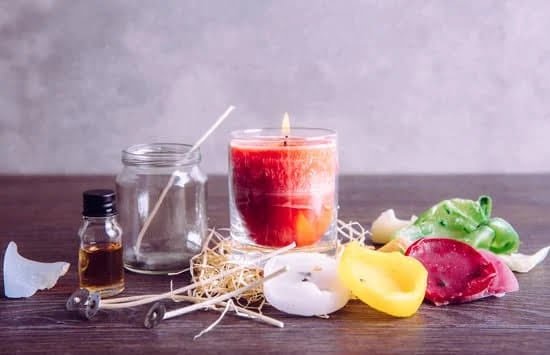Candle making has become a beloved hobby and creative outlet for many individuals, allowing them to craft their own unique and personalized candles. One crucial element in the candle making process is the use of molds, which play a vital role in shaping and defining the final product. In this article, we will delve into the world of candle making and explore the importance of molds in creating beautiful candles.
As more people discover the joy of candle making, it has evolved from a simple craft into an art form. With endless possibilities for customizing scents, colors, and designs, candle making allows individuals to express their creativity and create one-of-a-kind pieces that reflect their own personal style. Molds essentially act as the canvas for these creations, providing structure and shape to the molten wax.
Understanding the role of molds in candle making is essential to achieving desired results. Molds not only determine the size and shape of a candle but also contribute to its aesthetic appeal.
There is a wide variety of molds available in the market, ranging from traditional metal or silicone molds to more unique options like latex or plaster of Paris molds. The versatility of molds allows candle makers to experiment with different shapes and styles, ensuring that each creation is truly distinct.
In this comprehensive guide, we will walk you through everything you need to know about making your own molds for candle making. From understanding mold-making materials to step-by-step instructions on creating silicone molds from scratch, we will equip you with all the knowledge necessary to unleash your creativity and elevate your candle-making skills.
Join us on this exciting journey as we explore the fascinating world of candle making and dive into mold-making techniques that will inspire you to create candles that are truly works of art.
Understanding the Role of Molds in Candle Making
When it comes to candle making, molds play a vital role in shaping the final product. They not only provide structure and stability to the candle but also allow for endless possibilities in terms of design and customization. In this section, we will explore the importance of molds in candle making and the different types of molds available in the market.
One of the primary reasons why molds are necessary in candle making is that they help create consistent shapes and sizes. Whether you prefer traditional pillar candles or unique designs, molds ensure that your candles have a professional finish. Molds also provide support to the wax as it cools and hardens, preventing any deformities or uneven surfaces.
There are various types of molds available for candle making, each with its own advantages and considerations. The most commonly used molds include metal, silicone, plastic, and glass molds. Metal molds are durable and ideal for creating simple pillar or votive candles.
Silicone molds are flexible and easy to demold, making them perfect for intricate designs. Plastic molds are affordable and versatile, but may not withstand high temperatures like silicone or metal molds. Glass molds offer a unique aesthetic but can be challenging to remove the finished candle without breaking the mold.
In addition to ready-made molds, many candle makers choose to make their own custom molds for a personal touch. Customized molds allow you to create unique shapes or incorporate textures into your candles. You can use everyday objects like seashells, fruits, or vintage containers as inspiration for your custom mold designs. By experimenting with different materials and techniques, you can take your candle making skills to the next level.
Overall, understanding the role of molds in candle making is essential for any aspiring candle maker. It not only ensures consistent results but also opens up a world of creativity and artistic expression. So whether you’re a beginner or an experienced crafter, exploring different types of molds and experimenting with custom designs will elevate your candle making journey to new heights.
Preparing to Make Your Own Candle Mold
Before you begin the process of making your own candle mold, it is important to gather all the necessary materials and tools. Here is a list of items you will need:
- A model for your mold: This can be an existing candle or an object that you want to replicate.
- Mold-making material: Depending on the type of mold you want to create, you will need either silicone, latex, or plaster of Paris.
- Mixing containers: These can be disposable cups or bowls.
- Measuring tools: Use a scale or measuring cup to ensure accurate proportions of ingredients.
- Stirring utensils: Wooden sticks or plastic spatulas work well for mixing the molding material.
- Release agent: If using silicone or latex molds, a release agent such as petroleum jelly or vegetable oil will help remove the mold from the model.
Once you have gathered all the necessary materials, there are some tips to consider when selecting the right mold-making materials.
For silicone molds, make sure to choose a high-quality silicone that is flexible and durable. Look for products specifically designed for mold making.
If you prefer latex molds, opt for liquid latex rather than pre-made sheets. Liquid latex allows for more control and flexibility in creating intricate designs.
Plaster of Paris molds are suitable for simpler designs and can easily be made using household items like cups or containers.
Lastly, it is crucial to prioritize safety measures when making your own candle mold. Always work in a well-ventilated area and wear protective gear such as gloves and goggles. Follow all instructions provided by the manufacturer of your chosen molding material.
| Materials | Tools |
|---|---|
| A model for your mold | Mixing containers |
| Mold-making material | Measuring tools |
| Release agent | Stirring utensils |
Step-by-Step Guide
Creating your own silicone mold for candle making is a cost-effective and fun way to customize your candles. Silicone molds are popular among candle makers because they are flexible, durable, and easy to use. In this step-by-step guide, we will walk you through the process of creating a silicone mold from scratch.
Materials and Tools Needed
- Silicone rubber compound: Choose a high-quality silicone rubber compound specifically designed for mold making. Look for one that is food-grade and can withstand high temperatures.
- Catalyst: The catalyst is necessary to activate the curing process of the silicone rubber. Make sure to choose the appropriate catalyst for your chosen silicone rubber compound.
- Mixing containers: Use disposable cups or mixing containers that can withstand the curing process without deforming or reacting with the silicone rubber.
- Stirring stick: A wooden or plastic stirring stick is ideal for mixing the silicone rubber and catalyst thoroughly.
- Release agent: Apply a release agent to your original candle or prototype before pouring the silicone mixture over it. This helps in easily removing the finished mold later on.
- Mold box: Build a mold box using materials such as foam board or wooden panels that will provide support and contain the silicone mixture during pouring.
- Mold release spray: This will help prevent any sticking of the cured mold to the mold box during demolding.
Step 1: Preparing Your Candle Prototype
Before creating your silicone mold, you need a prototype of your desired candle shape. This can be an existing candle or a handmade clay model. Ensure that your prototype is clean and dry before proceeding.
Step 2: Building Your Mold Box
To create a containment area for pouring the silicone rubber, build a mold box around your candle prototype using foam board or wooden panels. The sides of the box should be at least 1 inch taller than your prototype.
Step 3: Mixing and Pouring the Silicone Rubber
- Measure and mix the appropriate amount of silicone rubber compound and catalyst according to the manufacturer’s instructions.
- Stir the mixture thoroughly, making sure there are no lumps or streaks. Take care not to introduce air bubbles into the mixture.
- Spray a thin layer of mold release spray onto your candle prototype and the inner surfaces of the mold box.
- Pour the mixed silicone rubber slowly into one corner of your mold box, allowing it to flow evenly over your candle prototype. Continue pouring until the mold box is filled to the desired height.
- Gently tap the sides of the mold box to release any trapped air bubbles.
Step 4: Curing Process and Demolding
The curing time will vary depending on the type of silicone rubber you use. Follow the manufacturer’s instructions regarding curing time and temperature requirements. Once fully cured, carefully remove your silicone mold from the mold box.
Creating your own silicone mold for candle making opens up endless possibilities for unique designs and shapes. With practice, you can master this process and create professional-looking molds that will elevate your candle making skills to new heights. So why wait? Gather your materials, follow this step-by-step guide, and start creating personalized molds for your candles today.
Alternative Mold Making Techniques
Introduction to Alternative Mold Making Techniques
While silicone molds are a popular choice for candle making, there are also alternative mold making techniques that offer unique possibilities. In this section, we will explore some of these alternative techniques and discuss their pros and cons. Whether you’re looking to experiment with different materials or create one-of-a-kind designs, these techniques can take your candle making to the next level.
Latex Molds
One alternative mold making technique is using latex. Latex molds are flexible, durable, and can capture even the finest details of your candles. To create a latex mold, you would first need to prepare your original candle or object by sealing it with a release agent.
Then, apply layers of liquid latex onto the object to build up the mold. Allow each layer to dry before adding the next one, creating a thick and stable mold. Once fully cured, remove the latex from the original object and trim any excess material.
Pros of using latex molds include their ability to withstand high temperatures and produce intricate designs. However, they do require more time and effort compared to silicone molds since they need multiple layers and curing time between each layer.
Plaster of Paris Molds
Plaster of Paris molds offer another option for candle makers. This method involves creating a negative impression of your original object using plaster of Paris mixed with water. While it takes longer for plaster molds to cure compared to other materials like silicone or latex, they can provide excellent detail reproduction. Once the plaster has hardened, remove the original object from the mold carefully.
Plaster of Paris molds are affordable and allow for easy customization by carving or sculpting directly on the mold surface before pouring in wax. However, they may not be as durable as silicone or latex molds and might break after multiple uses.
Found Object Molds
For those seeking truly unique and unconventional candle molds, consider using found objects. Look around your home or explore thrift stores or flea markets for interesting items that can be repurposed as candle molds. Seashells, vintage tins, or even fruits and vegetables can make fascinating candle containers.
When using found objects as molds, it’s important to consider their heat resistance and the ease of removing the finished candle. Additionally, proper preparation like sealing porous surfaces and adding a release agent may be necessary.
By thinking outside the box and trying these alternative mold making techniques, you can create candles with distinctive shapes and textures that will impress everyone who sees them. Experimentation is key when exploring these methods, so don’t be afraid to get creative.
Customizing Your Candle Mold Design
When it comes to candle making, there is no limit to the creativity you can bring to your designs. One of the best ways to add a personal touch to your candles is by customizing your mold design. By doing so, you can create unique and one-of-a-kind candles that reflect your own style and personality.
There are several techniques you can use to customize your candle molds. Adding texture is one way to create visually interesting candles. You can use materials like lace, burlap, or even tree bark to create different textures on the surface of your mold. Simply lay the material onto the mold before pouring in the wax, allowing it to leave an impression as the wax sets.
Patterns are another great way to customize your candle molds. You can achieve this by using stencils or templates placed inside the mold before pouring in the wax. This will leave you with a beautifully patterned candle once it has cooled and solidified.
If you’re feeling adventurous, you can even experiment with creating unique shapes for your candle molds. This could be achieved by bending or shaping a flexible mold material, or by using objects such as cookie cutters or small figurines as the base for your mold.
To help spark inspiration for unique candle mold designs, take a look at what other artisans have created. Many talented individuals have shared their creations online, showcasing an array of inventive designs and techniques. Don’t be afraid to take some risks and try something new – after all, candle making is an art form that allows for endless creativity.
| Techniques | Tips | Inspiration |
|---|---|---|
| Adding Texture | – Use various materials like lace, burlap or tree bark. | – Check out online resources for unique texture ideas. |
| Creating Patterns | – Utilize stencils or templates inside the molds. | – Browse through artisan creations for pattern inspiration. |
| Unique Shapes | – Bend or shape flexible mold materials. | – Experiment with using objects like cookie cutters or figurines as molds. |
Troubleshooting Common Mold Making Issues
Addressing Air Bubbles in Candle Molds
Air bubbles are a common issue that candle makers encounter when making molds. These air pockets can create unsightly imperfections in the finished candle, and may affect the stability and burn quality of the candle as well. To prevent air bubbles from forming, it is important to take certain precautions during the mold making process.
One effective way to minimize air bubbles is to use a vacuum chamber or degassing tool. Before pouring the silicone or other mold-making material into the mold box, place it in a vacuum chamber and remove any trapped air. This helps ensure that the mold material fills every crevice of the mold without any air pockets.
If using a vacuum chamber is not an option, tapping or vibrating the mold box can also help release trapped air bubbles. Gently tap or vibrate the sides of the mold box to encourage any air bubbles to rise to the surface before pouring in the mold material.
In addition, choosing a slow-setting mold-making material can prevent trapping air bubbles within the mixture. Fast-curing materials tend to create more air bubbles due to their rapid hardening process. Taking your time and allowing for a slower curing process will give any remaining air bubbles ample time to rise to the surface and pop before your mold sets completely.
Dealing with Uneven Walls in Candle Molds
Uneven walls in candle molds can result in candles that are misshapen or have varying thicknesses throughout. This issue can be frustrating for candle makers who desire consistent and uniform candles. Fortunately, there are strategies you can employ to overcome this challenge.
One possible cause of uneven walls is improper mixing of your mold-making material. Ensure that you follow the manufacturer’s instructions carefully when measuring and mixing your materials. Thoroughly mix until all components are fully incorporated; otherwise, uneven curing may occur.
Another cause could be an uneven pour when filling the mold with your chosen material. When pouring, try to distribute the material evenly throughout the mold. Pouring too quickly or pouring from a height can create turbulence in the mold, leading to uneven walls.
To address this issue, you may need to correct or smooth out the walls of the mold before pouring in your candle wax. After removing your newly made mold from the mold box, inspect it for any areas where the walls may be uneven. Depending on the type of mold-making material used, you can use sandpaper or a small sculpting tool to carefully reshape and smooth out any imperfections.
Salvaging a Mold That Didn’t Turn Out as Expected
Sometimes, despite our best efforts, molds may not turn out as expected. However, this doesn’t necessarily mean that all is lost. In some cases, it’s possible to salvage a mold and still make use of it for candle making projects.
If you find that your mold has air bubbles or uneven walls but is still intact and functional, don’t be discouraged. You can patch up small air bubble holes with additional silicone or mold-making material. Fill in the holes and allow them to cure before proceeding with using the mold for candle making.
In situations where an entire side or section of your mold didn’t set properly, carefully remove the unset portion from the rest of the silicone or other material. Once removed, you can try re-pouring with fresh material to fill in those areas and complete your mold.
Remember that experimenting and problem-solving are part of the creative process. Don’t be afraid to think outside the box and find innovative ways to salvage and repurpose molds that didn’t turn out as intended. With some patience and resourcefulness, you can often find solutions that allow you to continue using molds that would have otherwise been discarded.
Caring for and Reusing Your Candle Molds
Once you have successfully made your own candle molds, it is important to properly care for them to ensure their longevity and to be able to reuse them for future candle making projects. Taking proper care of your molds will not only save you money in the long run but also help maintain the integrity and quality of your mold designs. Here are some tips on caring for and reusing your candle molds.
First, after each use, it is essential to clean your candle molds thoroughly. Remove any leftover wax residue by gently scraping it off with a non-abrasive tool, such as a plastic spatula or spoon. Be cautious not to scratch or damage the mold during this process. Once the majority of the wax is removed, wash the mold with warm soapy water using a soft cloth or sponge. Rinse thoroughly and ensure that all soap residue is removed before drying.
After cleaning, it is recommended to store your candle molds in a cool and dry place away from direct sunlight. This will help prevent any potential warping or damage caused by heat or UV exposure. Consider wrapping individual molds in a soft cloth before storing them to provide extra protection against dust or scratches.
To extend the lifespan of your candle molds, it is important to handle them with care during each use. Avoid using sharp objects or excessive force when removing candles from the mold, as this can cause cracks or deformities in the mold structure. Instead, gently flex or twist the mold if needed to release the candle easily.
Additionally, considering different ways to reuse your candle molds can expand their usefulness in your candle making journey. For example, you can experiment with different wax colors or fragrance combinations in order to create unique variations of your original design. You may also try incorporating other materials into your candles, such as dried flowers or herbs within transparent parts of the mold.
Taking proper care of your candle molds not only ensures their longevity but also allows you to continually explore and experiment with different candle making techniques. By following these care tips and reusing your molds creatively, you can unleash your creativity and elevate your candle making skills to new heights. So, don’t hesitate to give mold making a try and unlock endless possibilities in the world of candle making.
Conclusion
Candle making has become an increasingly popular creative art form, allowing individuals to express their personality and style through beautifully crafted candles. Molds play a crucial role in the candle making process, providing structure and shape to the candles. Throughout this article, we have explored the various types of molds available in the market, discussed how to prepare and create your own molds, and even explored alternative mold making techniques.
By customizing your own candle molds, you have the opportunity to let your creativity shine. Whether it’s adding unique textures or patterns to your molds or experimenting with different shapes and sizes, personalized candle molds allow you to create one-of-a-kind candles that truly reflect your individuality. The possibilities are endless.
If you’ve been hesitant about trying mold making for candle making projects, I encourage you to take the leap and give it a try. Don’t be afraid to experiment and explore different techniques and materials. Mold making is not only a practical skill but also a gateway to unlocking your creative potential.
So why not unleash your creativity with personalized candle molds? Explore different designs, play with colors, and let your imagination run wild. With each new mold you make, you’ll enhance your candle making skills and produce candles that are truly unique and special.
I hope this article has inspired you to dive into the world of mold making for candle making projects. So gather your materials, put on those safety goggles, and start creating your own personalized candle molds today.
Frequently Asked Questions
What is the best thing to use for candle molds?
The best thing to use for candle molds depends on personal preference and the desired outcome. Silicone molds are a popular choice as they are flexible and allow for easy release of candles. They also come in various shapes and sizes, making them versatile for different candle designs.
Another option is metal molds, which are durable and provide a smooth finish to the candle surface. Additionally, glass containers or jars can serve as interesting, reusable molds for container candles.
What materials are used to make candle molds?
Candle molds can be made from various materials. Silicone is commonly used due to its flexibility and ease of demolding candles. It is also heat-resistant, making it suitable for both melt-and-pour and traditional wax pouring methods.
Metal molds, typically made of aluminum or stainless steel, offer sturdiness and excellent heat conduction properties. They come in different shapes and sizes, giving candles a professional look. Additionally, glass containers or jars can be repurposed as molds for container candles.
Can you make your own candle moulds?
Yes, it is possible to make your own candle molds using different techniques and materials depending on your preferences and resources available. One common method involves using flexible materials like silicone or latex rubber to create custom shapes by pouring the material around an existing object or sculpture. This technique allows for unique and detailed candle designs that may not be commercially available.
Another option is to repurpose everyday items such as milk cartons or plastic containers as temporary molds for simple pillar or votive candles made at home. With some creativity and resourcefulness, homemade candle molds can add a personal touch to your candle-making endeavors.

Welcome to my candle making blog! In this blog, I will be sharing my tips and tricks for making candles. I will also be sharing some of my favorite recipes.





